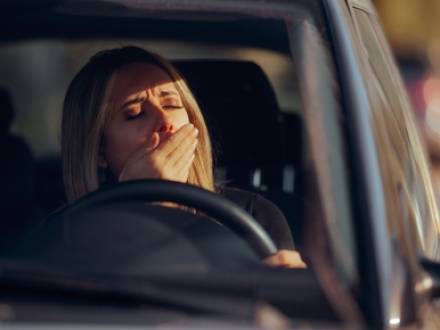Are Drowsy Driving Accidents Increasing in the U.S.?
 The CDC reports that one in 25 adult drivers admit to falling asleep while driving, and many more admit to driving while they are sleep-deprived. It is estimated that as many as 6,400 people die each year in auto collisions that are caused by drowsy driving. In fact, the reaction time of drivers who are sleep-deprived is similar to those who drive while impaired.
The CDC reports that one in 25 adult drivers admit to falling asleep while driving, and many more admit to driving while they are sleep-deprived. It is estimated that as many as 6,400 people die each year in auto collisions that are caused by drowsy driving. In fact, the reaction time of drivers who are sleep-deprived is similar to those who drive while impaired.
A driver who has gone more than 20 hours without sleep is just as impaired as a driver with a BAC of 0.08 percent – the legal limit across the United States and Illinois. Many drivers may experience short, four to five-second periods of "micro-sleep" but do not think they are being unsafe drivers. Yet at typical highway speeds, a vehicle can travel the length of a football field during those four to five seconds.
In addition to the fatalities caused by drowsy driving, there are another 328,000 drowsy driving crashes each year that can cause moderate to severe injuries that can affect a person’s future for a very long time. If you were hit by a driver who was driving while drowsy, you need assistance from a highly experienced Lombard, IL personal injury attorney.
What Accounts for the Increase in Drowsy Driving Accidents?
Drowsy driving affects virtually everyone. In some cases, an individual has no choice but to get behind the wheel with too little sleep, although some groups are at a greater risk of driving while overly fatigued than others. Less experienced teen drivers are more likely to drive late at night for social reasons, making them more susceptible to collisions caused by fatigue.
An increasing number of shift workers work the night shift and often work double shifts. These two groups of drivers have as much as six times the risk of driving while overly fatigued than other drivers. Doctors, nurses, firefighters, pilots, police officers, and factory workers often work double shifts, night shifts, and rotating shifts, which can cause them to engage in drowsy driving.
Commercial drivers, like semi-truck drivers, are at a much higher risk of overly fatigued driving since they put in many more miles than the average commuter. Federal guidelines allow truck drivers to drive for 11 hours. Those who have driven for 11 hours straight know how exhausting it can be, yet tight deadlines force these long driving hours for commercial drivers.
Drowsy Driving Crash Avoidance Technologies
New technologies like lane departure warnings can be helpful for those who have little choice in whether to drive while drowsy. Some vehicles also have "drowsiness alert" systems, which alert drivers when they have been driving for a certain number of hours by suggesting that the driver take a break. Unfortunately, this may not be much of a deterrent since most drivers who are driving while overly fatigued are often aware they should not be driving but have little choice.
The Sleep Research Society reports that adults should get at least seven hours of sleep each night, yet this is hardly the norm for most adults. A driver who is having difficulty keeping his or her eyes open, is nodding off or drifting out of his or her lane, and does not remember driving the last few miles should pull over, if only for a few moments.
Getting a cup of coffee, running around the car a few times, or singing as loudly as possible can all help drivers get where they are going safely. In the end, being drowsy or overly fatigued slows a driver’s reaction times, impacts judgment, and makes the driver less attentive to other drivers and potential hazards on the road.
Contact a DuPage County, IL Auto Accident Lawyer
If you have suffered injuries from a drowsy driver who collided with you, it can be beneficial to speak to a Naperville, IL auto accident attorney from Mevorah & Giglio Law Offices. For the convenience of our clients, we offer Saturday and evening appointments and have three offices in Lombard, Bloomingdale, and Naperville. Call 630-932-9100 to schedule your free case evaluation.
 English,
English,
 Spanish,
Spanish,
 Polish,
Polish,
 Urdu
Urdu













 Make a Payment
Make a Payment



